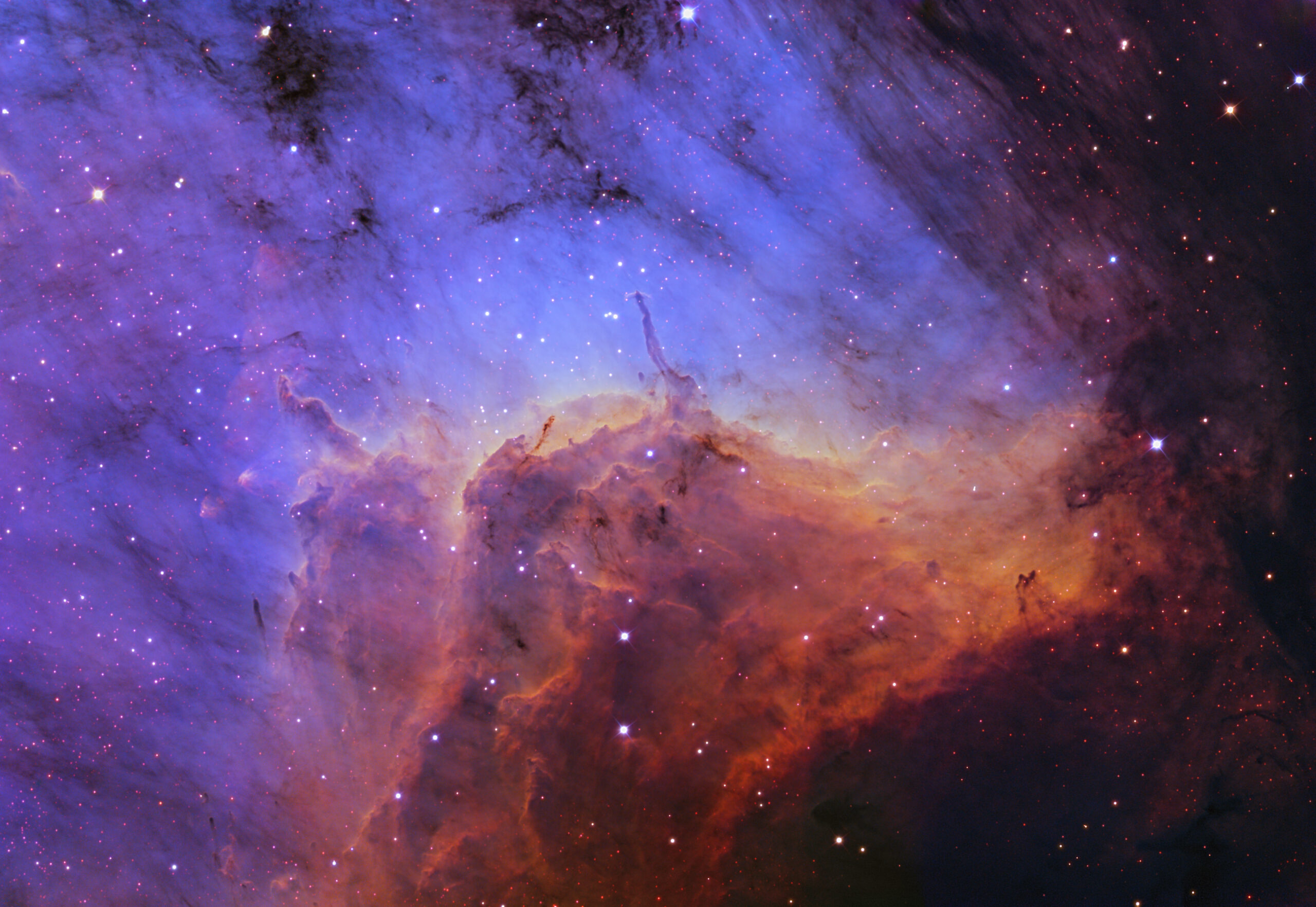
Robert Gendler (United States), M42, The Great Nebula in Orion, 2005, Inkjet print, 60 x 40 inches. Collection of the Bates College Museum of Art
As someone who has no interest or talent for anything scientific, I approached Starstruck: Fine Art of Astrophotography not sure if I would enjoy it. Could photographs of the universe really count as art? To me at first, it seemed pretty far-fetched to say so when I could turn to my 8th grade science textbook and find similar images. The only way I assumed one could enjoy such an exhibition would be if they had a proficient understanding of astronomy, but since I did not have that whatsoever, I was skeptical.
However, within one perusal through the collection’s catalogue, my critical perception changed. I was mesmerized by the collection’s innovative subject matter and dazzling representation. I never thought that the universe could be so aesthetically beautiful. Each image was an exciting surprise as it explored a different view of the sky and universe above us. My initial apprehensions were proven completely wrong as I realized there was something innately artistic about these photographs. But this made me start to wonder what exactly these characteristics were. It definitely was not an appreciation for the science behind each image. The answer lied somewhere else.
So I stepped back from the collection and thought about what makes any art, art. I mean there has to be something that separates a Picasso from the doodles of a five year old.I have decided that there are essentially two factors that I believe all art should uphold: it must contain fundamental compositional elements such as line, form, color, depth, etc. and it must encourage the viewer to think. If we look at a few examples of astrophotography, such as Robert Gendler’s M42, The Great Nebula in Orion or Ken Crawford’s IC 5067, we are exposed to dramatic representations of movement, depth, color, and the contrast of light and dark. Exploring the images even further, the photographers provide us with the platform to think about big questions. Where did the universe come from? How did it organize into what it is today? Is there intelligent life outside of this Earth? I cannot say that the photographers held these questions in mind when creating their works, but it is undeniable that the viewer is lead to this realm of the unknown. These astronomic phenomena seen in Starstruck allow the viewer to explore the intangible and witness the awesome beauty of the unseen. And it is there that the artistic beauty lies; an image that is formally engaging as well as intellectually stimulating is more than enough to convince me that astrophotography is art.
Share your opinion! Would you consider astrophotography a true art form? What elements do you believe make a work of art significant?
-Taylor Hunkins, Michener Art Museum Intern, Summer 2014